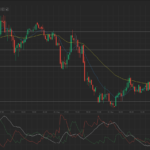Grain futures were mixed on Wednesday, with soybeans advancing on increased Chinese demand for US supplies, while wheat and corn declined.
On the Chicago Board of Trade, soybeans futures for settlement in March surged by 0.35% to trade at $13.1162 per bushel by 15:42 GMT. Prices swung between day’s high and low of $13.1312 and $13.0338 per bushel respectively. Yesterday prices touched $13.1662 per bushel, the strongest level since December 27th. The oilseed settled last year 8.5% lower.
During the last few sessions, soybeans prices were well-supported amid indications of strong demand for US exports.
The US Department of Agriculture reported earlier in the week that export inspections for soybeans increased to 59.38 million bushels, exceeding analysts projections of 45 to 50 million bushels.
Data by the same government agency released on Monday, showed that China, the largest soybeans importer, concluded a deal for 140 000 metric tons of US grain. The data also revealed nearly 40% increase in US exports to China with a total amount of 26.1 billion tons since the beginning of the marketing year on September 1st.
The weather will be mostly favorable in Brazil, while at the same time, weather conditions may be stressful for the developing soybeans and corn in Argentina. DTN’s January 14th forecast called for a new round of extreme heat to develop in Argentina today and to remain until Saturday. High temperatures may damage the pollinating corn. The dry and hot weather may also reduce soil moisture for corn and soybeans. A cooler weather, accompanied by showers may occur during the weekend, but the coverage of the rainfall is still uncertain.
Conditions remain favorable for developing soybeans in the Brazilian producing regions, Rio Grande do Sul, Parana and Mato Grosso. According to the website, the soil moisture will be recharged by frequent episodes of scattered showers and thunderstorms. There are also mainly favorable conditions for filling to maturing soybeans and for the early harvest in northern crop areas.
Elsewhere on the grains market, corn futures for March delivery declined 0.49% to trade at $4.2888 a bushel by 15:44 GMT. Futures held in a range between day’s high and low of $4.3138 and $4.2762 per bushel. On January 10th prices touched $4.0638 per bushel, the lowest since August 2010. The grain lost nearly 40% in 2013, the steepest annual drop on record, on projections that the global output will surge to 964.3 million tons in the 2013-2014 season, boosted by record production in the US, the world’s top producer.
Wheat loses ground
On the Chicago Board of Trade, wheat futures for settlement in March declined by 0.51% to trade at $5.7562 per bushel by 15:44 GMT. Prices jumped to a session high of $5.7962, while day’s bottom was touched at $5.7388 per bushel. On January 10th, prices touched $5.6088 per bushel, the weakest level since July 2010. Last 5-day period, wheat registered a six consecutive week of declines, the longest losing streak since October 2011. The grain slumped 22% in 2013, the largest annual decline since 2008, on expectations for a record-high global output of 711.42 million metric tons, according to data by the US Department of Agriculture.
Weather forecasting models were also supportive, pointing to mostly favorable conditions in the Midwest and the Southern Plains. DTN reported on January 14th that colder temperatures will return during the week, but will be much less intense than the freezing temperatures that occurred during the first half of the winter period. Meanwhile, no damaging cold is indicated for the next 10 days over the Southern Plains, with mostly dry weather during this period. According to the website, the wheat crop is generally in good condition.





